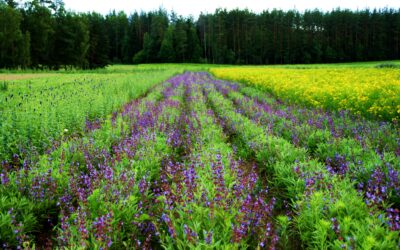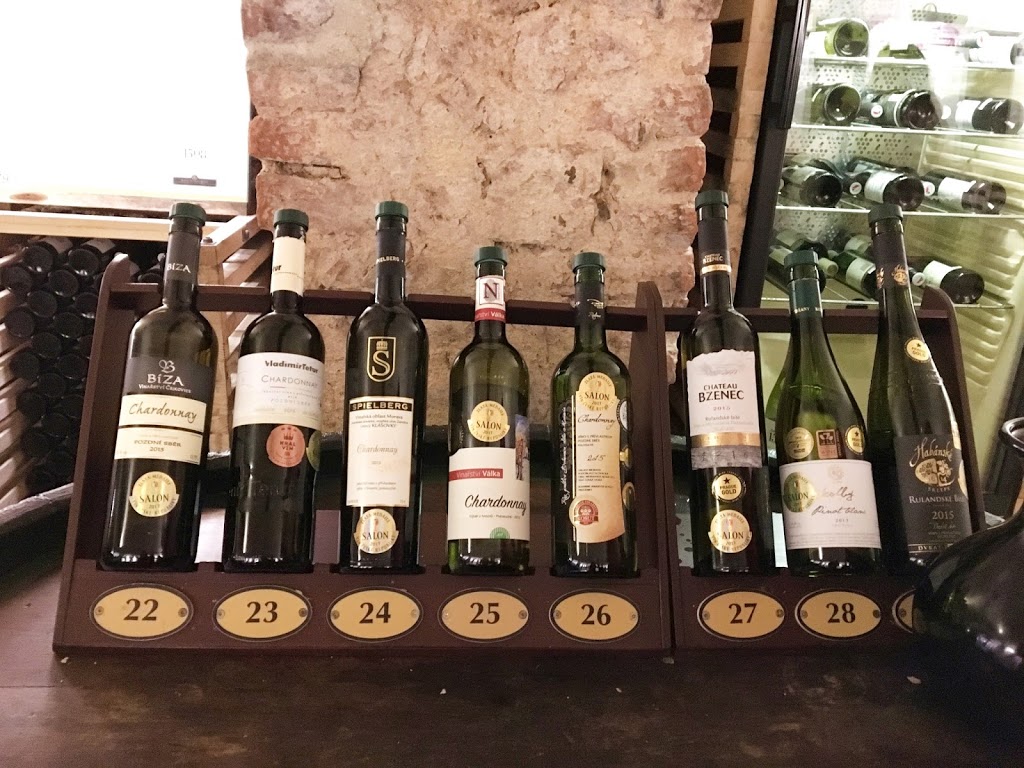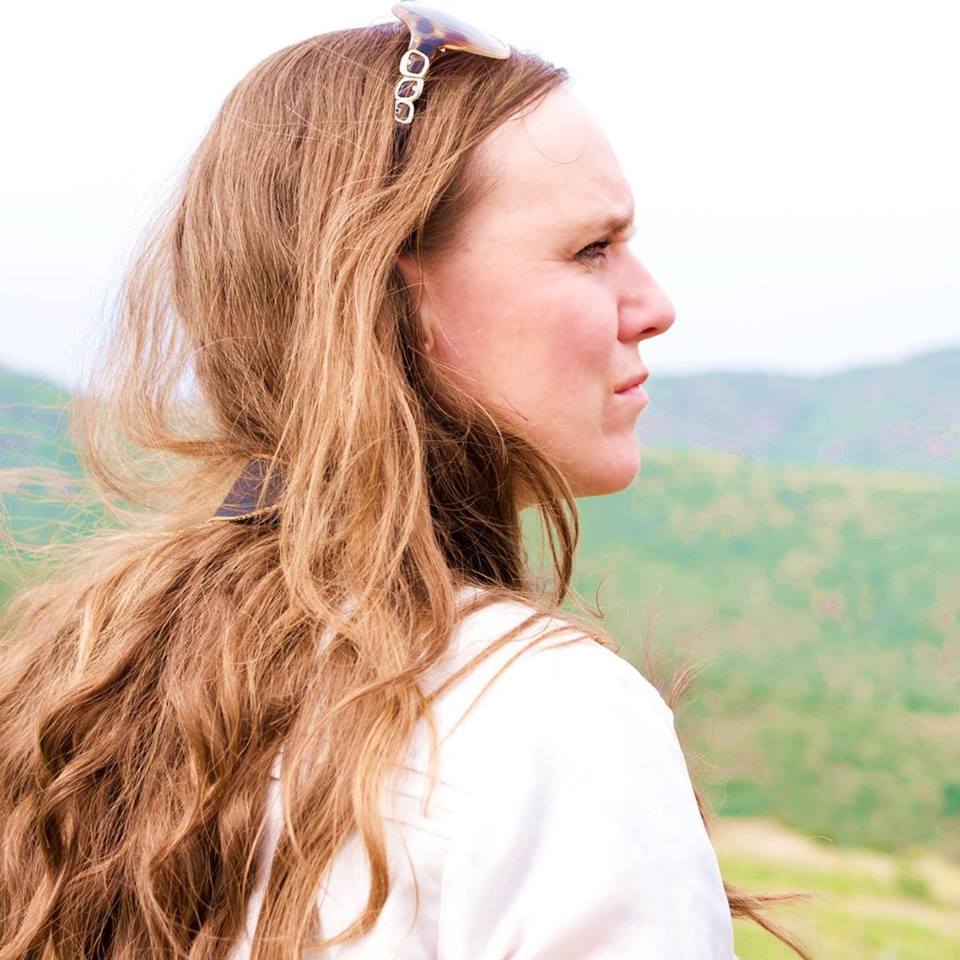The local and traditional taste of the Faroe Islands
I have a great interest for learning about and tasting traditional food while traveling. Local food and food traditions can tell me a lot about the culture I visit, and during my travels to the Faroe Islands in june I came with big expectations to taste new flavours that would teach me about life on these remote and isolated islands in the North Atlantic sea.
The Faroe Islands did not disappoint me! Come along and discover local and traditional flavours from the Faroe Islands.
PROMOTIONAL CONTENT
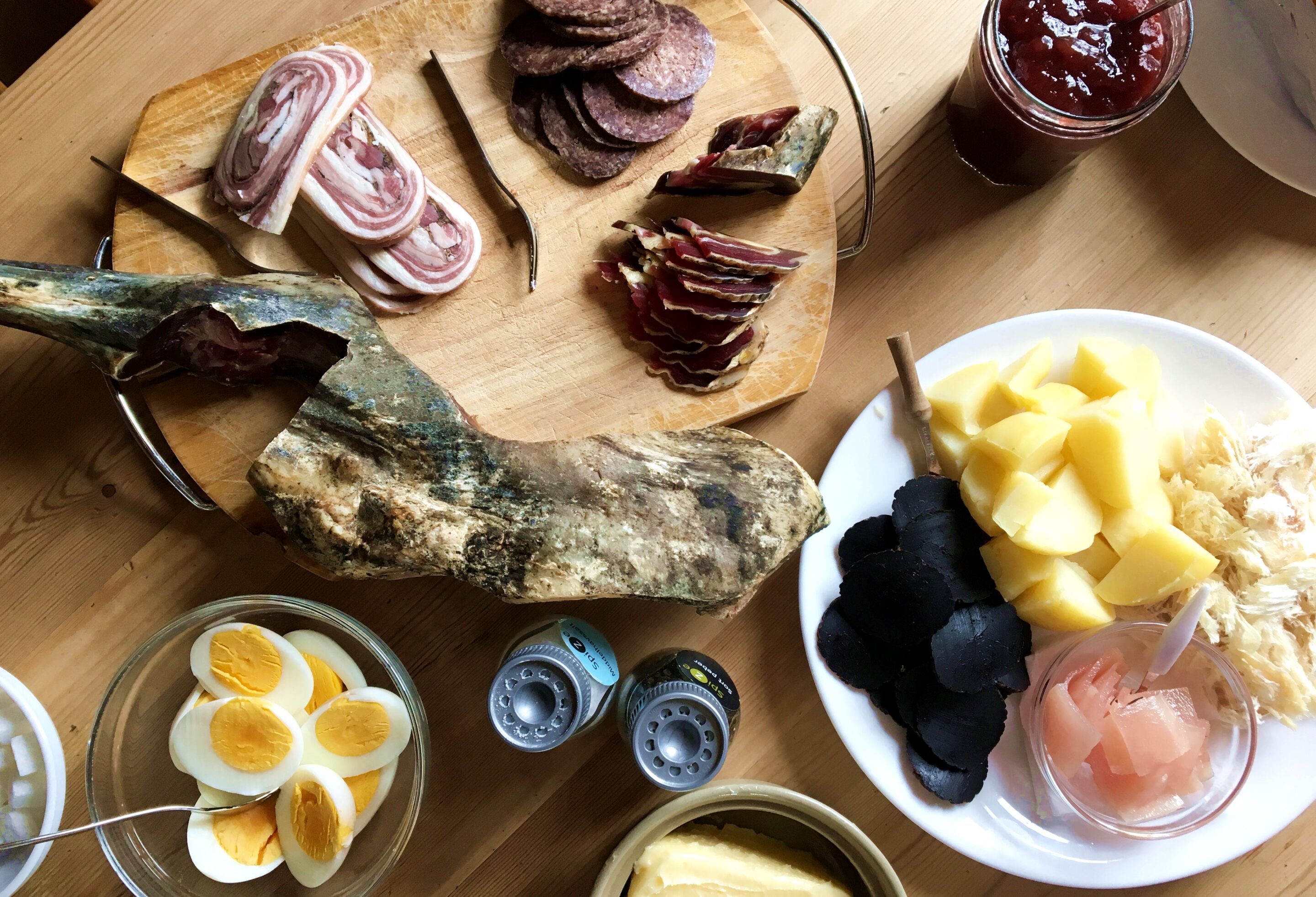
18 islands in a rough area
The Faroe Islands is located in a rough area in the North Atlantic sea. It is an archipelago and consists of 18 islands spread over a narrow area and they have a subpolar oceanic climate. The fishing industry is one of the main income sources for the country and traditional farming has shaped the landscape to what it appears today. Sheeps are a common sight on the islands and meat from sheep is one of the traditional ingredients found in many faroe dishes and specialities.
I visited Koltur, one of the islands that only has two inhabitants, and had a walk around the island and a food lesson including tasting home made, traditional Faroe food. Our hosts had prepared all the meat, fish and whale we tasted and even the bread served to the meal was freshly baked.
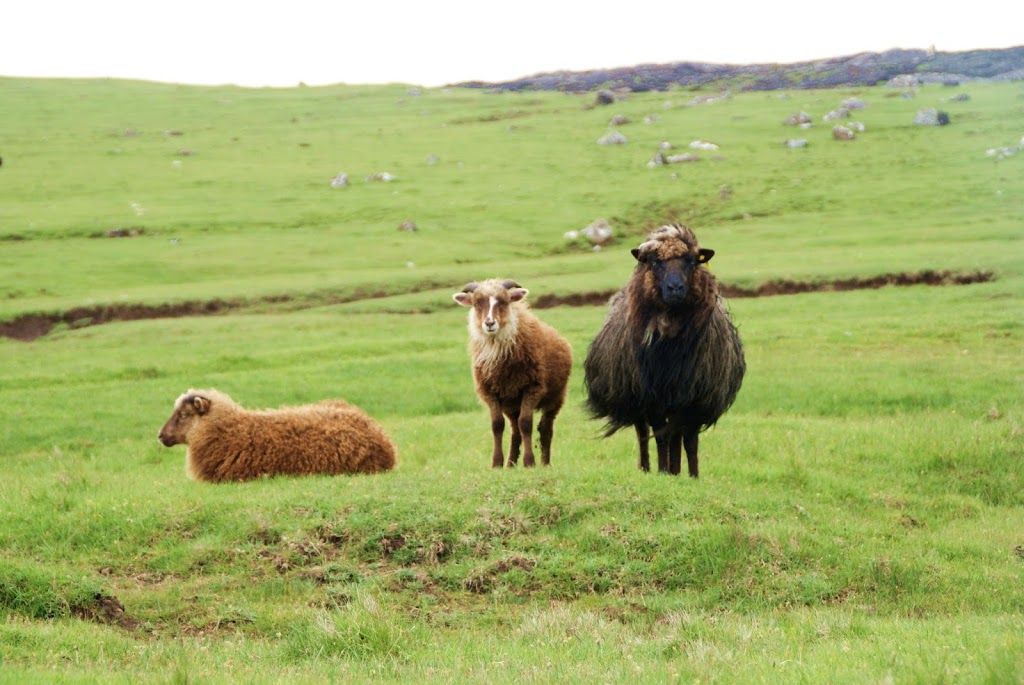
Fermenting – a food preservation method with long traditions in the Faroe Islands
SKJERPIKJØT
If you visit the Faroes you’re almost guaranteed to taste Skærpikjøt. This type of meat is sheep’s meat that has been hung to dry in a shed, going through a drying and fermenting process. In the Faroes the fermenting is done without the use of salt or smoke, which is more common in other places. The extreme climate mixes a lot of sea salt into the air, and the drying process under these conditions is perfect as the salt also gets to the meat. The meat is hung in drying sheds designed to let air flow through. Depending on the thickness of the meat, it will hang there for 6 to 9 months to become Skerpikjøt.
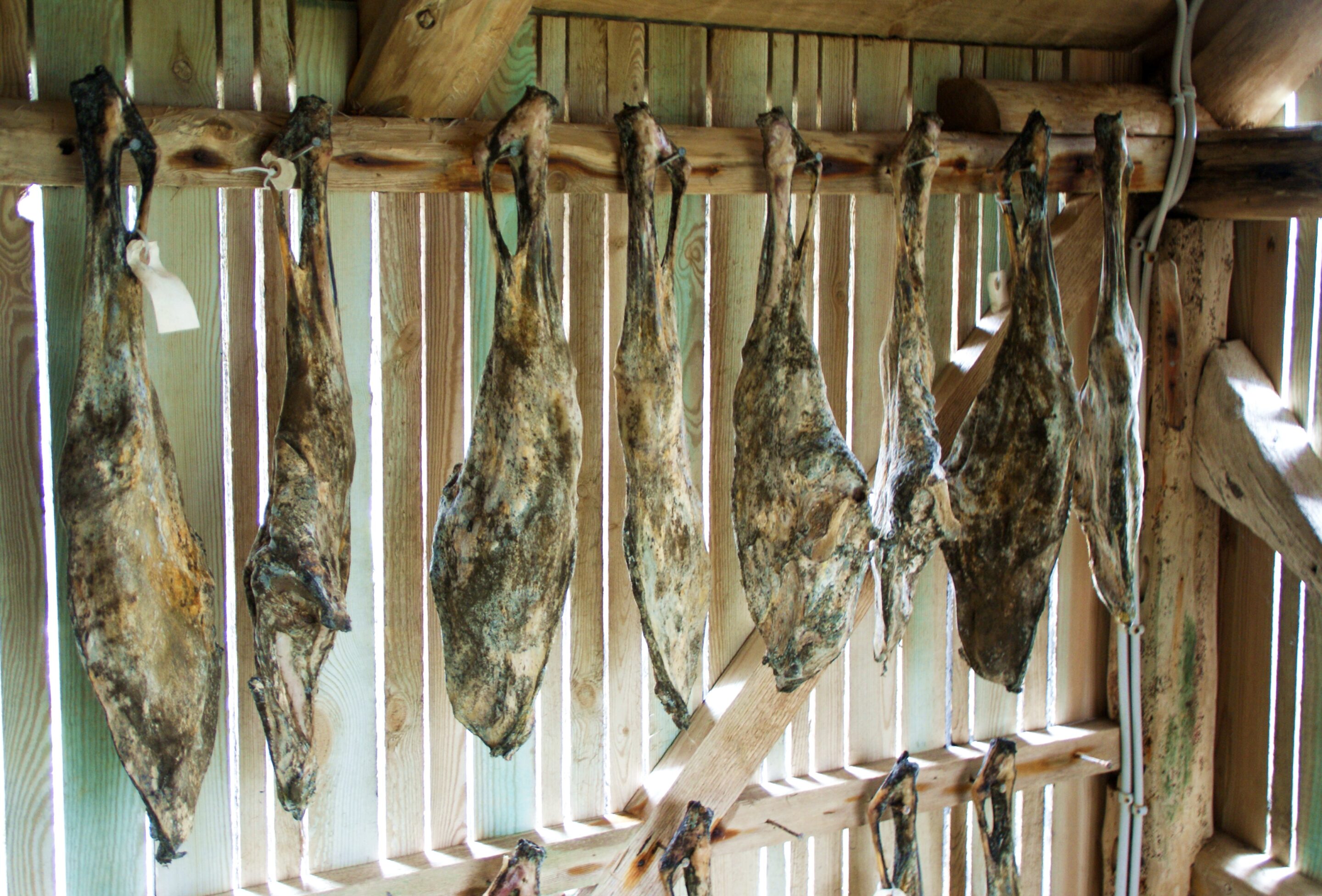
Before reaching the Skærpikjøt stage, the meat goes through two other stages. The first stage is the “visnet” (very matured meat) and the second stage is “ræst”. The faroe people eat the meat also in those stages, but not as a raw cut meat as they do with the Skærpikjøt. The “visnet” and “ræst” meat must be boiled and I’ve heard that the smell is so intense that they need to have all their windows and doors opened for days to get the smell out of the house.
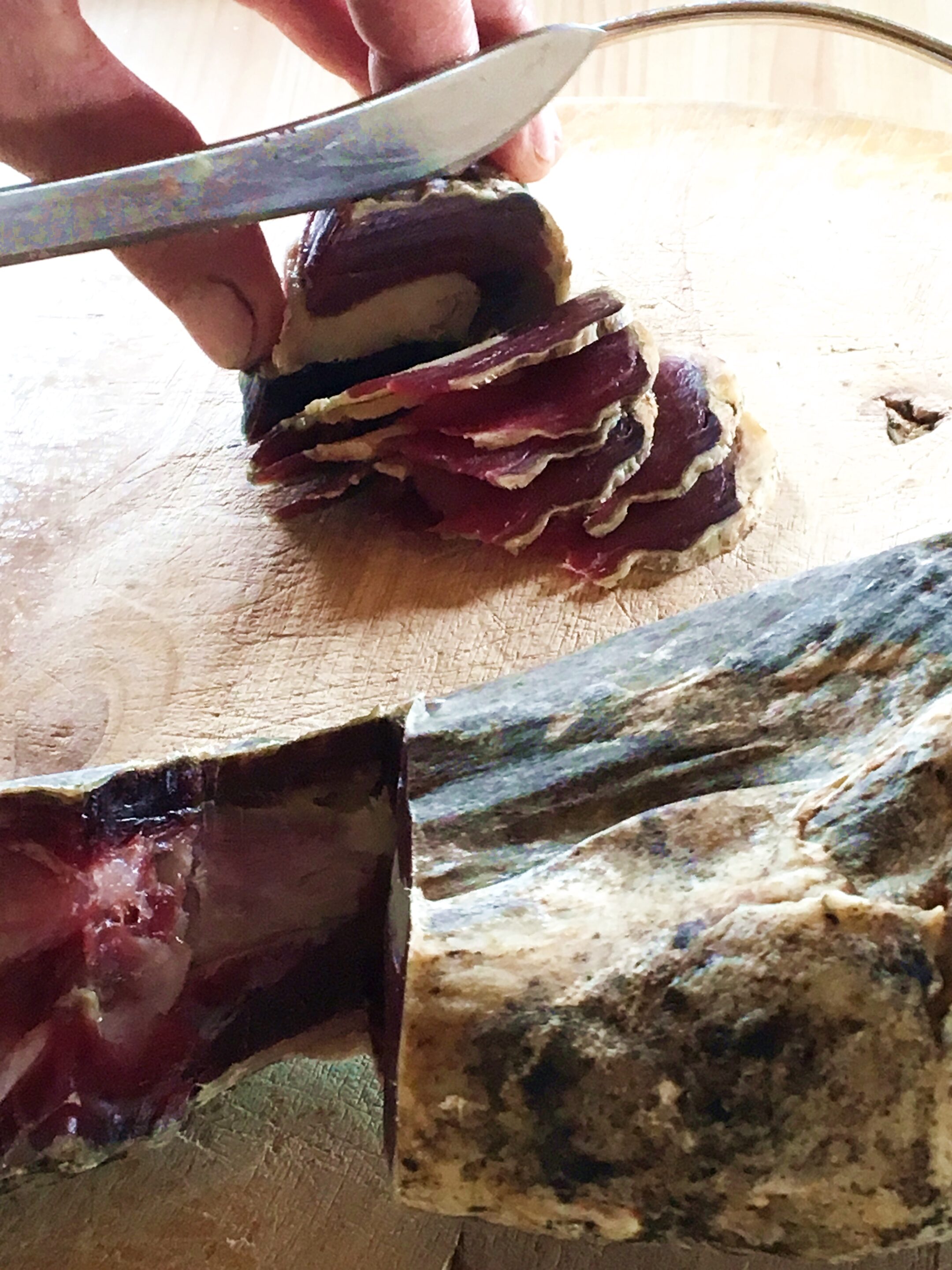
The taste of the Skærpikjøt is quite strong and meaty and has a hint of salt. It is often served as a snack along with a beer, as a starter, as cold cut put on top of bread or as a part of a dinner.
The meat can be bought at a local grocery store or at a local farmer, but most Faroes like to make it in their own shed to get the perfect taste.
It is common to also make Kjøtpølse, a sausage made of sheep’s meat, fat, spices and herbs, after the “secret” family recipe and dry and ferment these as well in the shed.
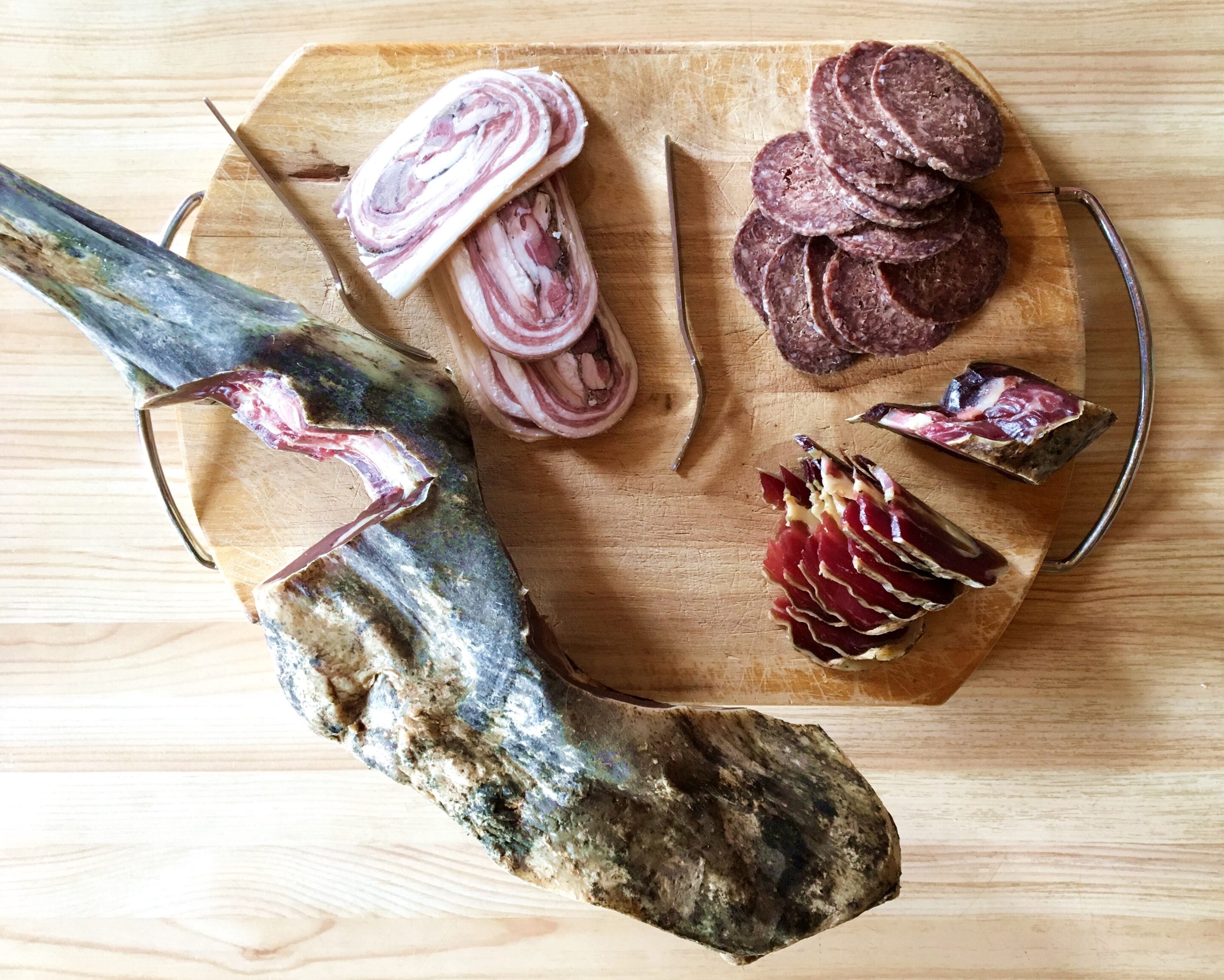
Another classic dish to make is the Rullepølse, which is a sausage made of sheep’s meat, fat, spices and herbs put in layers and rolled into a sausage. The sausage is boiled and served as cold cut.
Fermented and dried fish and whale
In the Faroe Islands they also ferment and dry fish and whale, not only sheep’s meat. The fish and meat are kept in different sheds for the tastes and process not to mix. During my visit to the faroes I also spotted dried fish hanging outside the entrance door of houses ready to be taken inside and eaten at any time. The dried fish can be eaten as is after a round of beating with a hammer to soften it a bit.
Meat and blubber from pilot whale is a natural ingredient in the Faroes food diet and traditions. The pilot whale meat is eaten fresh or cut in large pieces and hung to dry in the sheds. The blubber is put in large containers of salt to preserve it. Even though there is an ongoing international discussion concerning the non-commercial whaling on the Faroe Islands, there is no doubt that whale meat and blubber is an important part of the diet and living food traditions even today.
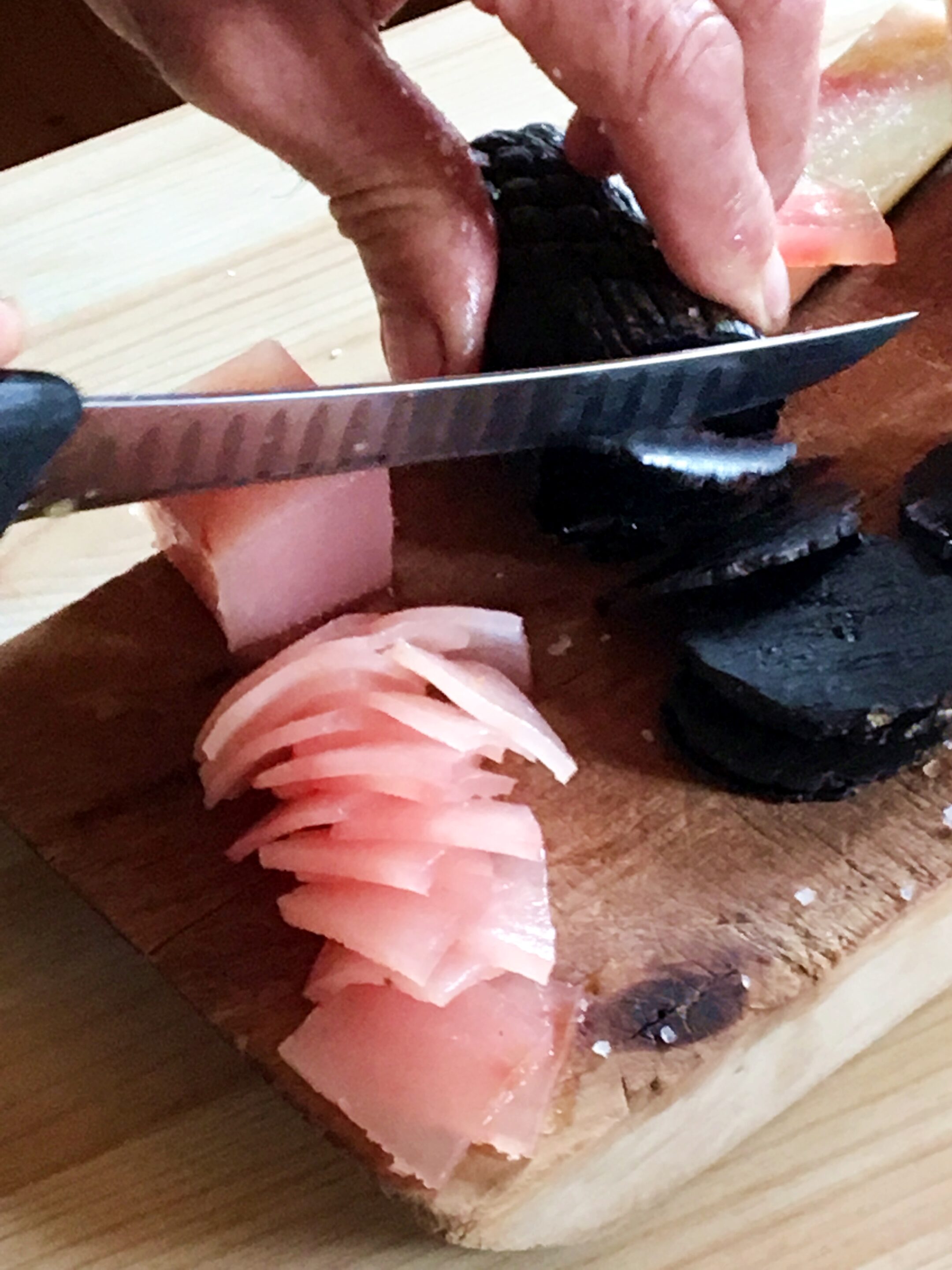
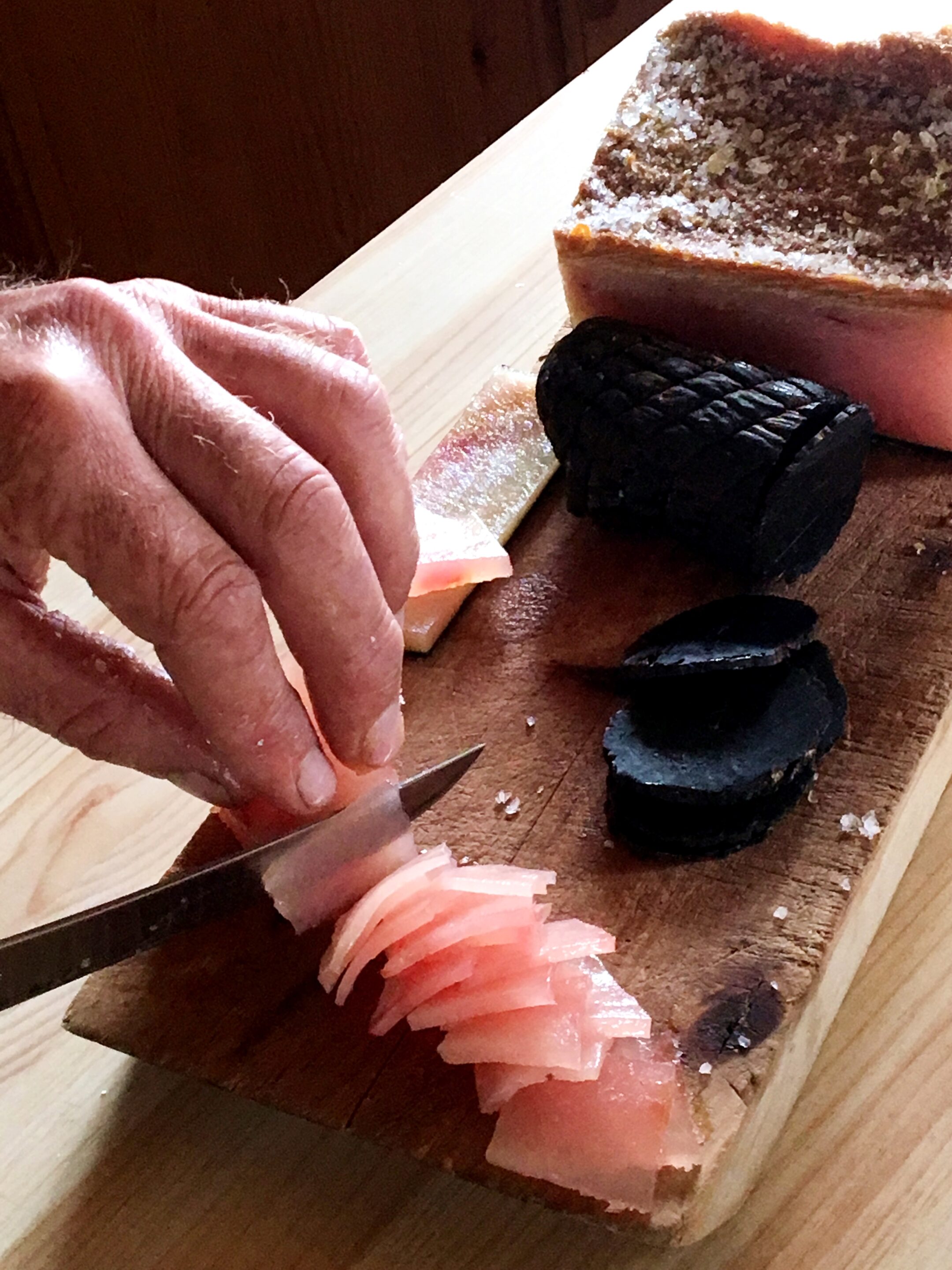
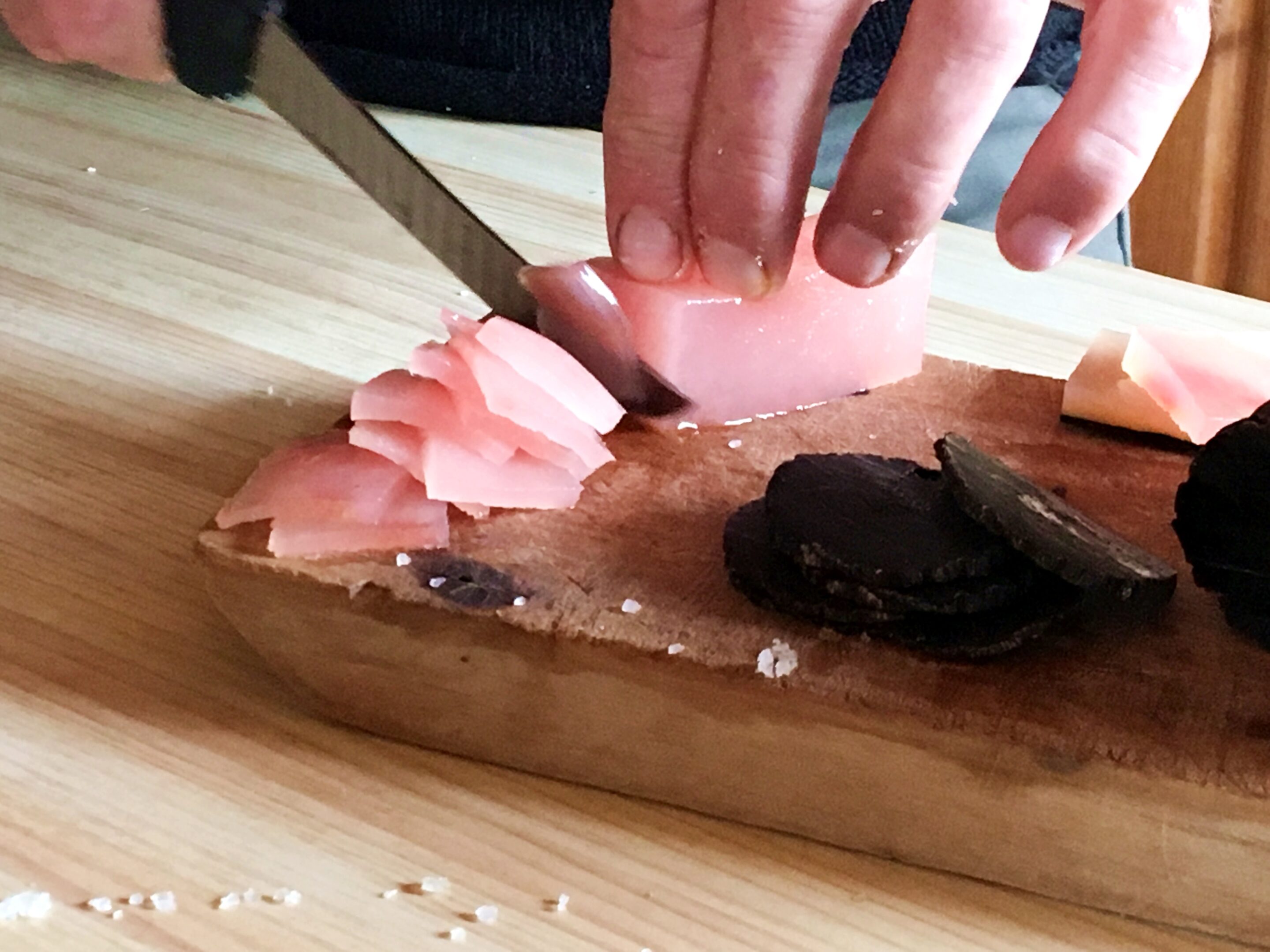
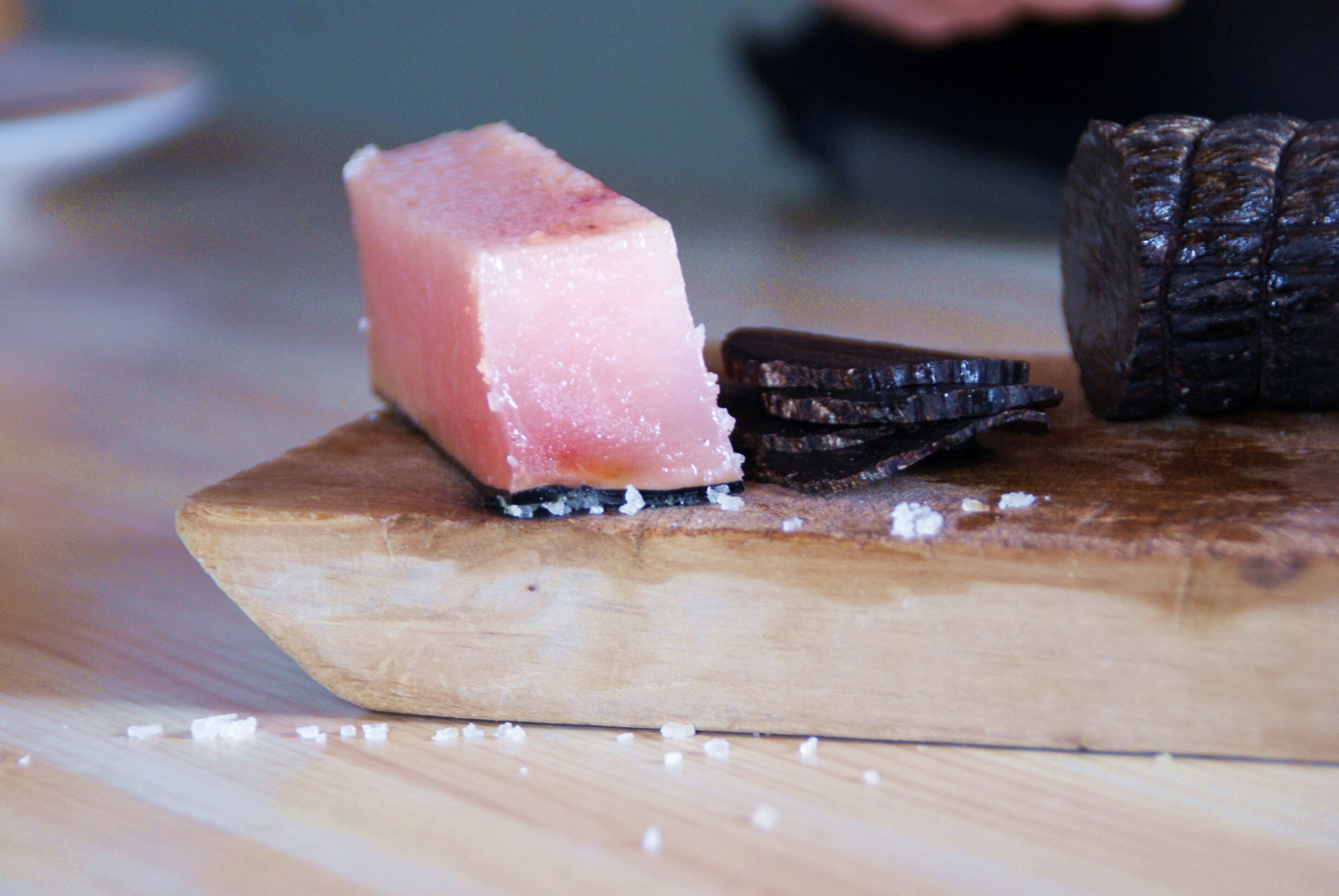
The blubber is cut into thin pieces and are served with dried whale meat and dried fish. The whale meat is almost entirely black and looks almost like black pudding. The blubber has a light pink colour.
Yearly they capture around 650 pilot whales on the Faroes and the hunting is done in the traditional way even though some of the tools that was common to used in previous times are now forbidden. All people involved in the hunting needs an educational course and all the meat and blubber is divided amongst the inhabitants in each village after the hunting is done. Preparing and preserving the whale meat, how to cut, dry and serve it is handed over from generation to generation.
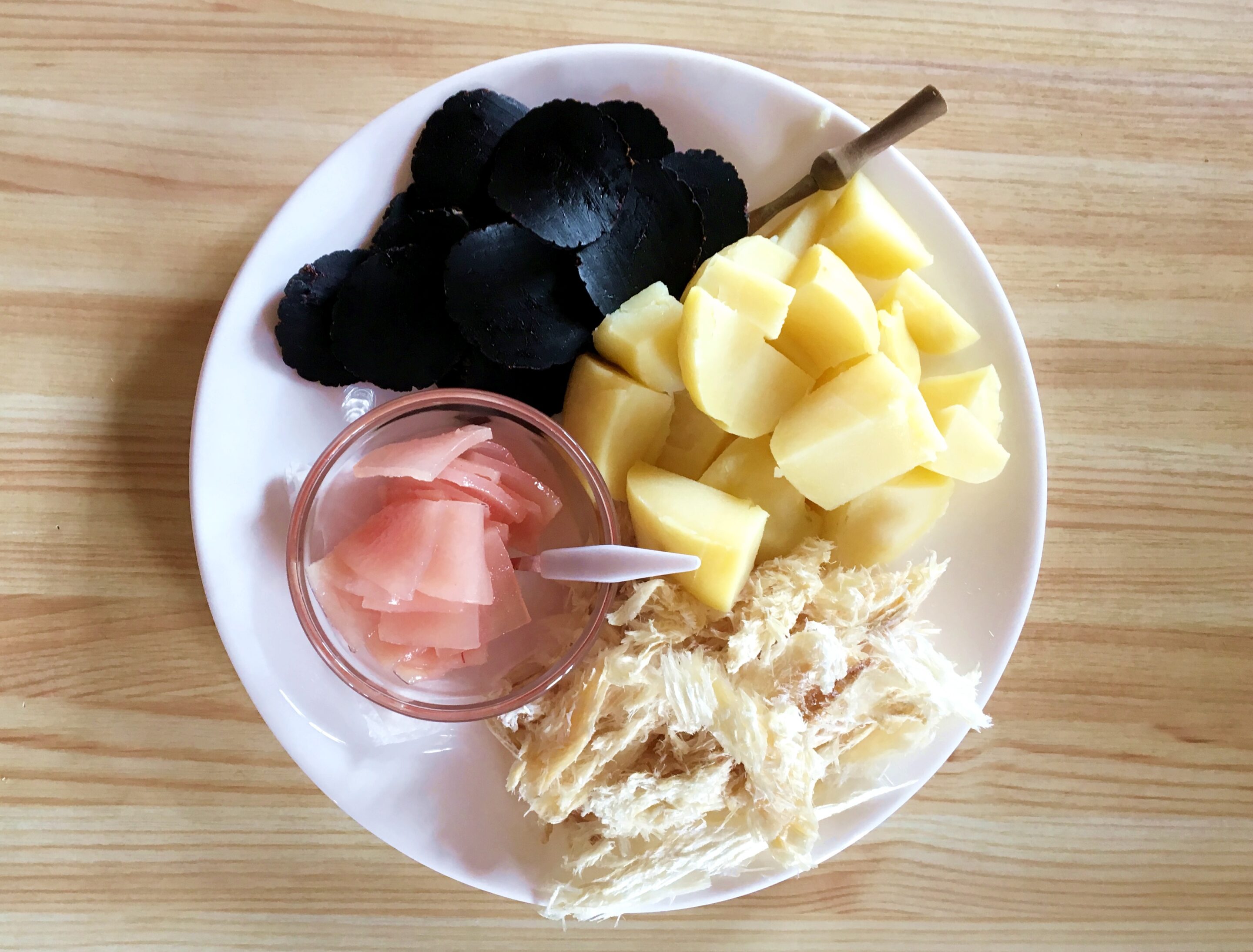
Dried fish, whale and blubber is usually served along with boiled, cold potatoes and was a common dish on the Faroes in previous times. These days it is commonly served as a snack, a starter or a part of a traditional meal with different dishes. The blubber is usually eaten on top of a piece of dried fish or whale meat so the taste and consistency mixes. The blubber is of course very nutritious and contains a lot of oil. The taste is resemblance to high fat fish meat.
Traditional taste in a new wrapping
Do you want to taste these traditional dishes when on the Faroes you can find a selection of restaurants and cafes in Torshavn fnd other small villages that serves these and other traditional Faroes dishes. Try out the Michelin star restaurant Koks who serves traditional food in a contemporary way or a home cooked meal at a Heimablidni, or Supper Club at Onnu og Ola
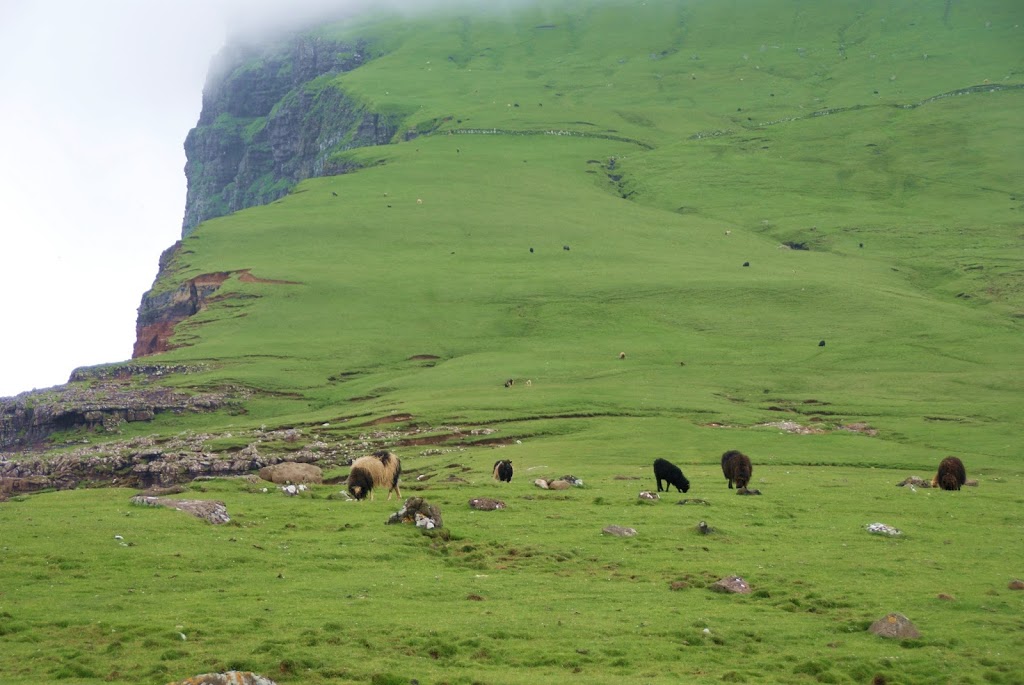
My trip to Faroe Islands was a part of the #MyFaroeIslandsHome campaign in collaboration with the internasjonal influencer network iAmbassador and Visit Faroe Islands. All opinions and meanings in as always my own.
This post is also available in: Norsk bokmål


